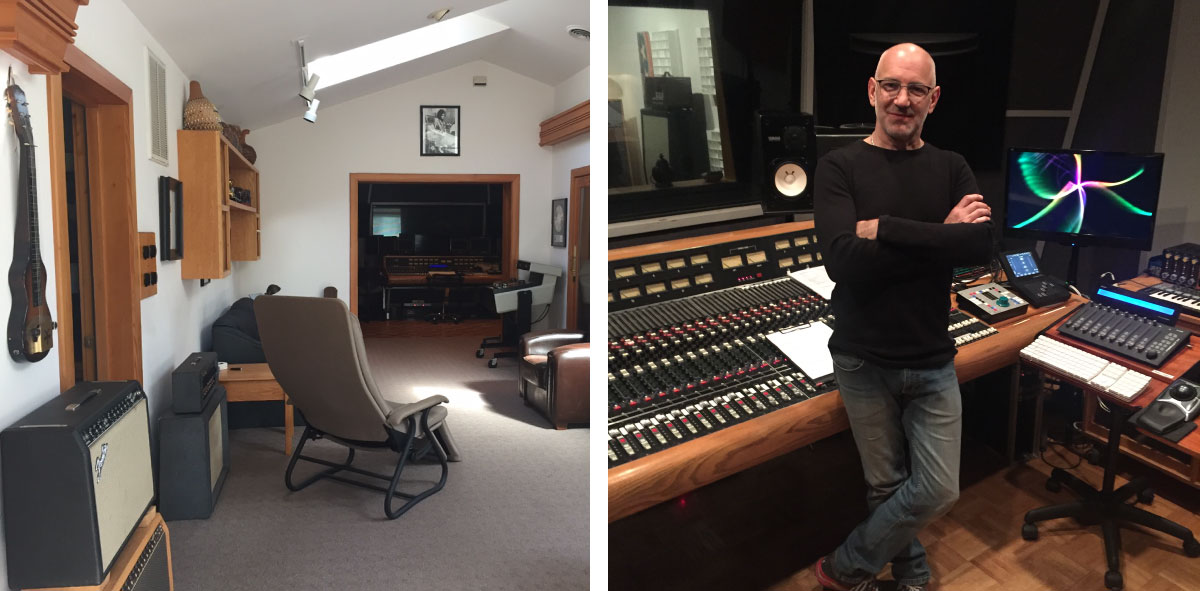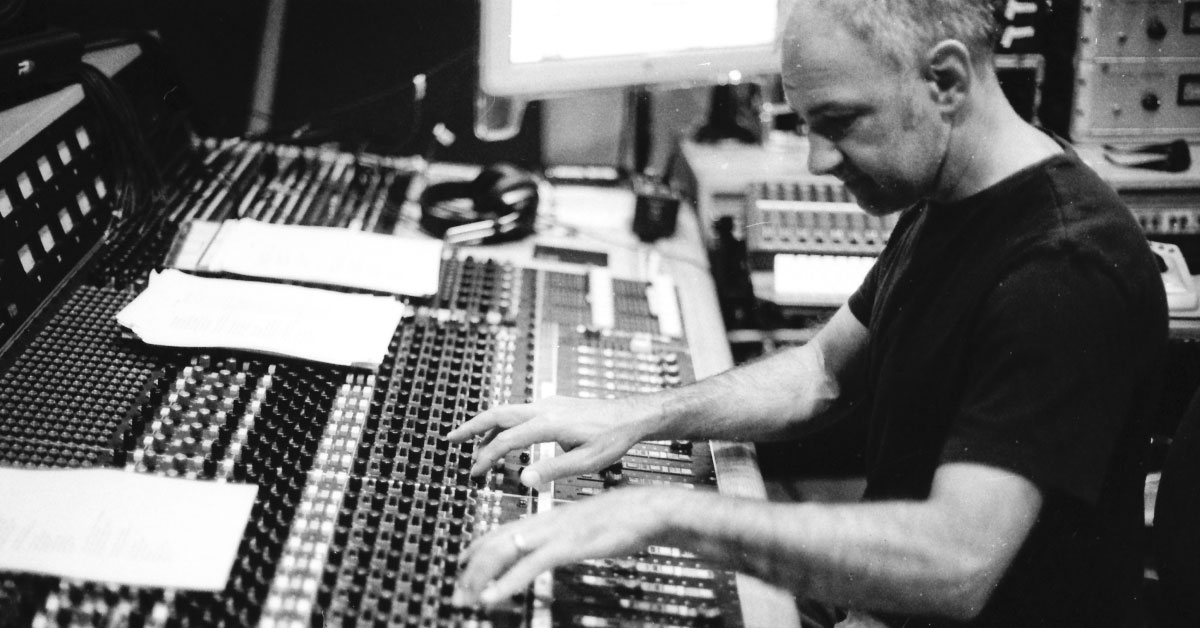Neal Cappellino is a 5x Grammy Award recipient known for his masterful vocal production with Nashville’s biggest artists from Alison Krauss to Vince Gill. We chatted with him about “listening vs. looking” at music, how he uses story to get a great vocal performance from an artist, and his work as a mentor for aspiring producers and engineers.
The HUB: What’s the difference between producing a vocal vs. an instrumental session?
Neal Cappellino: Most of the difference is that you’re dealing with an instrument within the body — you’re dealing with an instrument that is the body and I think psychology comes into play. If you’re tense, it’s hard to be fluid on an instrument — whether it’s guitar, or drums, or piano — but it doesn’t really affect the instrument, it just affects the way you play it. With the voice, if you’re relaxed the instrument is open and clear, but if you’re tense, it affects the actual instrument. You have things in play, whether it’s distractions, or emotional, or environmental — that can actually affect the condition of the instrument.
The HUB: How do you produce a great vocal session?
NC: Try to make it fun, easy and efficient. Be adaptable, thick-skinned, flexible, and supportive. Communication is paramount to really let the vocalist know you are supporting them. You can’t underestimate the psychology that goes into it. That’s a really fascinating aspect of working with vocalists because they come in such different stripes. I’d say as a producer developing that relationship will go a long way towards creating safety and comfort for the singer to do what they need to do.
Neal Cappellino produced, engineered, and mixed Brad Paisley's "Tin Can On A String" at The Yellow House Studio (Franklin, TN), and The Doghouse Studio (Nashville, TN).
The HUB: What can engineers do to keep a vocal session running smoothly?
NC: You wear many hats so preparation in every facet of your job is important. Technical setup and operation should be transparent and fluid. The more you can have done in the background, the more you can be present for the main focus which is a creative one. Rarely will you be applauded for it, but you will always be notified if it’s not up to snuff!
The HUB: Give an example of a vocal transforming into something great over the course of a session.
NC: I think the best magic happens when the vocalist connects with the song, and so if we’re gently trying to guide or support the vocalist into a place where they’re connecting with melody and lyrics, they can just fall into that story—then the performance comes.
The HUB: Can you give an example of an artist you’ve worked with “falling into the story?”
NC: Everything that Alison Krauss has ever done has been exactly that or it doesn’t see the light of day—the idea that the reading of the story is as important, or even more important than anything else (given that the voice is clear and supported). Paper Airplane is a perfect example of how she connects with the story to create an emotional, compelling performance. I learned how she was listening to the song, and what passed for a good take versus an outtake. It was all feeling-based listening.
Neal Cappellino engineered “Paper Airplane” by Alison Krauss at Blackbird Studio (Nashville, TN) and The Doghouse (Nashville, TN).
NC: I think one of the hardest things to do now with recording music digitally is to divorce ourselves from the screen and get back to listening. So, when we’re trying to evaluate a performance or judge the quality, it’s already a subjective exercise. It’s hard for us to multitask with the senses and devote all of our awareness to multiple sensories at the same time, so, if you’re engaging visually, I think the auditory will suffer. And what’s needed for critical listening is focus on the auditory, and on the emotional too. I think looking at waveforms on-screen — everything from color, to the waveform itself, to the amplitude of the waveform on-screen — we could be making judgement calls that have nothing to do with the musicality or the emotion of what’s going on with the music.
The HUB: How do you match the mic to the vocalist?
NC: Background helps. Listen to their voice in recorded material before the session. I’ve had other engineers contact me to find out microphone and signal path preferences for vocalists I’ve worked with and I’ve done the same. Otherwise, your knowledge and experience with mics should help narrow it down. Have a second mic and signal path ready to go if you need to make a change. Ask the artist what they’ve liked in the past. If there’s time, do a mic shootout.
The HUB: Favorite microphones?
NC: My favorite microphone is from a designer in California named Danny McKinney at Requisite Audio. His L7 is just stunning. It’s unsurpassed as far as I’m concerned, and vocalists continually respond to how well-supported they feel by what they’re hearing back in the headphones. In lieu of that there’s the classics that we all know, whether it’s a U47 or even a Shure SM7. I’ve recorded some great vocals through a handheld—you wouldn’t suspect it. Another obscure choice that the Beatles used sometimes is the Neumann KM 54, or KM 56—it’s a small diaphragm nickel condenser and it’s typically used on instruments, but it’s very friendly vocal mic, too.
The HUB: Tell us about your background.
NC: I grew up playing music — piano and drums. I attended college and earned a B.S. degree in Electrical Engineering and instead of entering the traditional workplace I combined those two vocations into the recording arts, beginning at Long View Farms Recording Studio, which is now closed. I moved to Nashville in ’92, built the first iteration of my own studio, and now I own and work out of The Doghouse Recording Studio.

(left) The lounge at The Doghouse Recording Studio and (right) Neal Cappellino in front of his console there.
The HUB: Tell us about The Doghouse Recording Studio.
NC: Well, The Doghouse was built to last in the ‘80s. It’s purpose-built, sounds great, and the feel is very comfortable. Technically it’s based around a Trident 80 Series console, a Studer 2 inch, Pro Tools 48 x 48, a full complement of great mics, and analog and digital gear. We host tracking sessions as well as typical overdubbing and mixing. It’s a private studio but with all of the commercial amenities. It’s a bit of a secret hideout and more visiting engineers are finding it the perfect spot to camp out. We just added a stunning 1917 Steinway grand to the mix too, so we’re trying to class it up a little.
The HUB: Tell us about the mentoring you do with Your Sound.
NC: Your Sound is a one-on-one mentoring service that I offer that was born out of the request by people to shadow me in the studio. People would ask, “Can I just come and watch what you do?,” and often the answer was, “No,” because the sessions are closed and I have to consider the artist. But what I did realize is that people were looking for an experience where they could observe and absorb how to do things better. What I found is, it’s actually more valuable for me to go to them and educate them on their own productions—on their own gear with their own skills rather than trying to show what I do in my environment. I go into another person’s studio and help them with everything from monitor placement, to plug-in usage, or, a lot of people want to know how to mix better and that starts with hearing better, so we build from there.
The HUB: What advice do you have for people who want to be producers and engineers?
NC: It’s valuable to understand that there is no shortcut to finding your own style as an engineer/producer. There are so many instruction resources out there in written form, and in video form, and in direct one-on-one, but there’s no substitute for actually woodshedding on your own. Educate yourself on music as much as possible and keep putting yourself into situations where you’re stretching and try to find what works for you—your unique approach. I hope people would understand whatever they’re hearing, or listening to, or gleaning from, that they take that and apply it to their own woodshedding process and do the work. There is no cut-and-paste when it comes to achieving a skillset. Get your hands dirty, claim your own mistakes, own your own successes.
Neal Cappellino produced, engineered, and mixed The Gabe Dixon Band's “Disappear" at Blackbird Studio (Nashville, TN) and Omni Studio (Nashville, TN).







































































































































